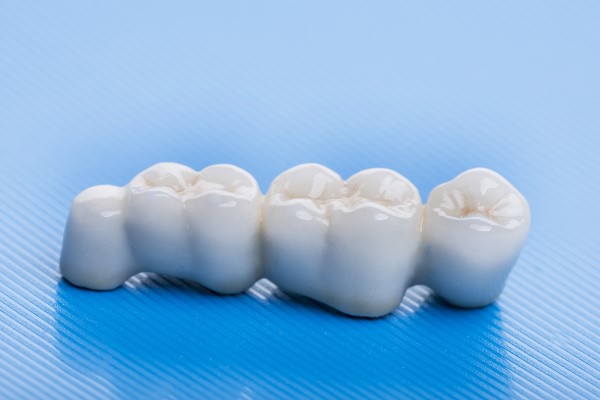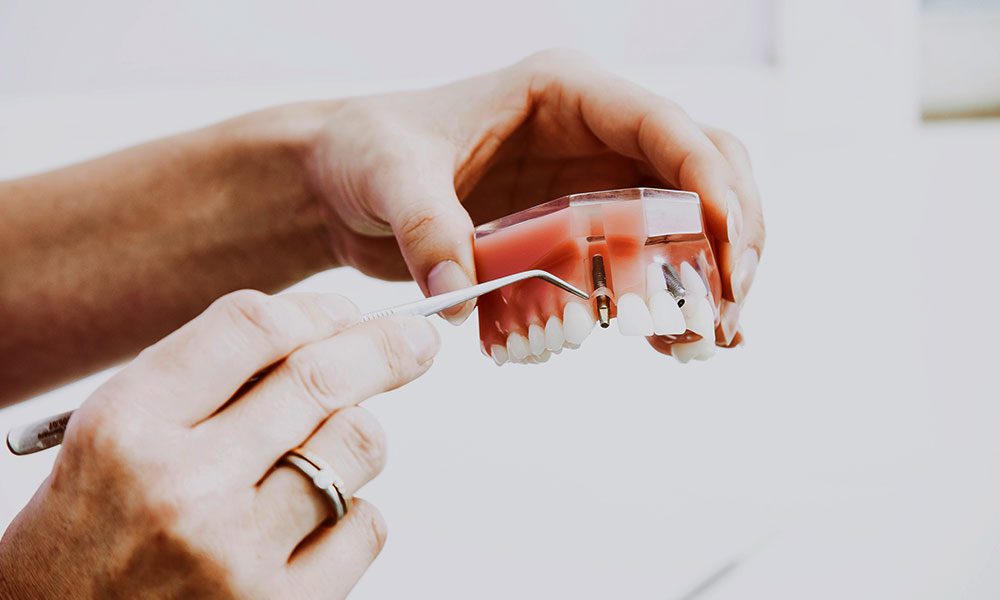In this article, the Orange Park general dentist will explore cantilever bridges for improved oral health and rehabilitation.
What is a cantilever bridge?
A cantilever bridge is a type of fixed dental bridge that consists of a single crown or multiple crowns attached to a single abutment tooth on one side of the gap, allowing the bridge to “cantilever” or extend over the gap. This design provides a stable and functional solution for missing teeth, while also conserving more natural tooth structure compared to traditional bridges.
When are cantilever bridges indicated?
The indications for a dental bridge include:
- Missing teeth: Bridges are used to replace one or more missing teeth.
- Aesthetic concerns: Bridges can improve the appearance of teeth and enhance self-confidence.
- Chewing difficulties: Bridges can restore chewing function and improve nutrition.
- Speech difficulties: Bridges can improve speech articulation and clarity.
- Tooth migration: Bridges can prevent adjacent teeth from shifting or migrating.
- Bite issues: Bridges can correct bite problems and improve occlusion.
- Cracked or broken teeth: Bridges can be used to restore teeth that are cracked or broken.
- Decay or fracture: Bridges can be used to restore teeth that are decayed or fractured.
- Congenitally missing teeth: Bridges can be used to replace teeth that are missing from birth.
- Trauma: Bridges can be used to restore teeth that are lost due to trauma.
- Orthodontic treatment: Bridges can be used in conjunction with orthodontic treatment to improve tooth alignment.
- Dental implants: Bridges can be used in conjunction with dental implants to replace missing teeth.
Advantages of cantilever bridges

The benefits of cantilever bridges include:
- Aesthetic appeal: Cantilever bridges can be designed to match the natural appearance of surrounding teeth.
- Functional stability: They provide a stable chewing surface and help distribute forces evenly.
- Conservation of tooth structure: By using only one abutment tooth, cantilever bridges preserve a more natural tooth structure.
- Cost-effective: Compared to implant-supported bridges, cantilever bridges can be more affordable.
- Reduced surgical time: Cantilever bridges typically require less surgical time compared to implant-supported bridges.
- Improved oral function: Cantilever bridges can improve chewing, speaking, and overall oral function.
- Boosts confidence: By restoring missing teeth, cantilever bridges can enhance self-confidence and overall quality of life.
- Easy maintenance: Cantilever bridges can be cleaned and maintained like natural teeth.
- Long-lasting: With proper care, cantilever bridges can last for many years.
- Versatility: Cantilever bridges can be used for both anterior and posterior teeth, and for small to medium-sized gaps.
How is a cantilever bridge fabricated?
The procedure involved in fabricating a cantilever bridge typically includes:
- Consultation and treatment planning: Discuss the patient’s needs and determine if a cantilever bridge is suitable.
- Preparation of the abutment tooth: Shaping the tooth to accommodate the bridge.
- Impression taking: Creating a mold of the prepared tooth and surrounding area.
- Bite registration: Recording the patient’s bite to ensure proper occlusion.
- Temporary bridge fabrication: Creating a temporary bridge for the patient to wear during the fabrication process.
- Laboratory fabrication: Sending the impressions and bite registration to a dental laboratory for bridge fabrication.
- Try-in: Checking the bridge’s fit, aesthetics, and occlusion.
- Cementation: Permanently attaching the bridge to the abutment tooth.
- Follow-up: Scheduling follow-up appointments to monitor the bridge’s performance and make any necessary adjustments.
The entire process typically takes several appointments and a few weeks to complete.
Takeaway
Cantilever bridges offer a viable solution for individuals with small gaps and suitable oral conditions. While they present some limitations, advancements in materials and techniques continue to improve their durability and aesthetics. Consult a dentist to determine if a cantilever bridge is the right option for your specific needs.

